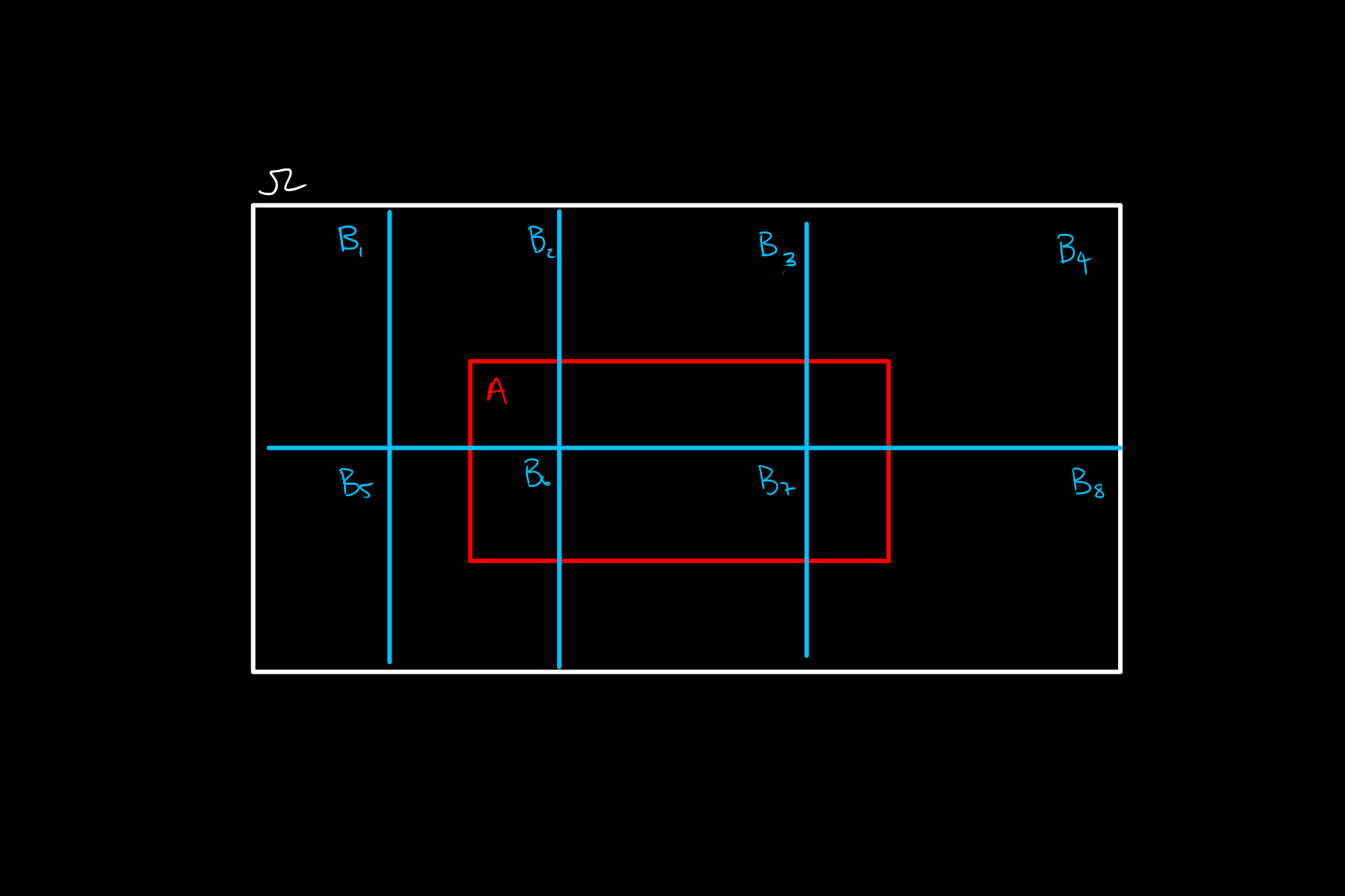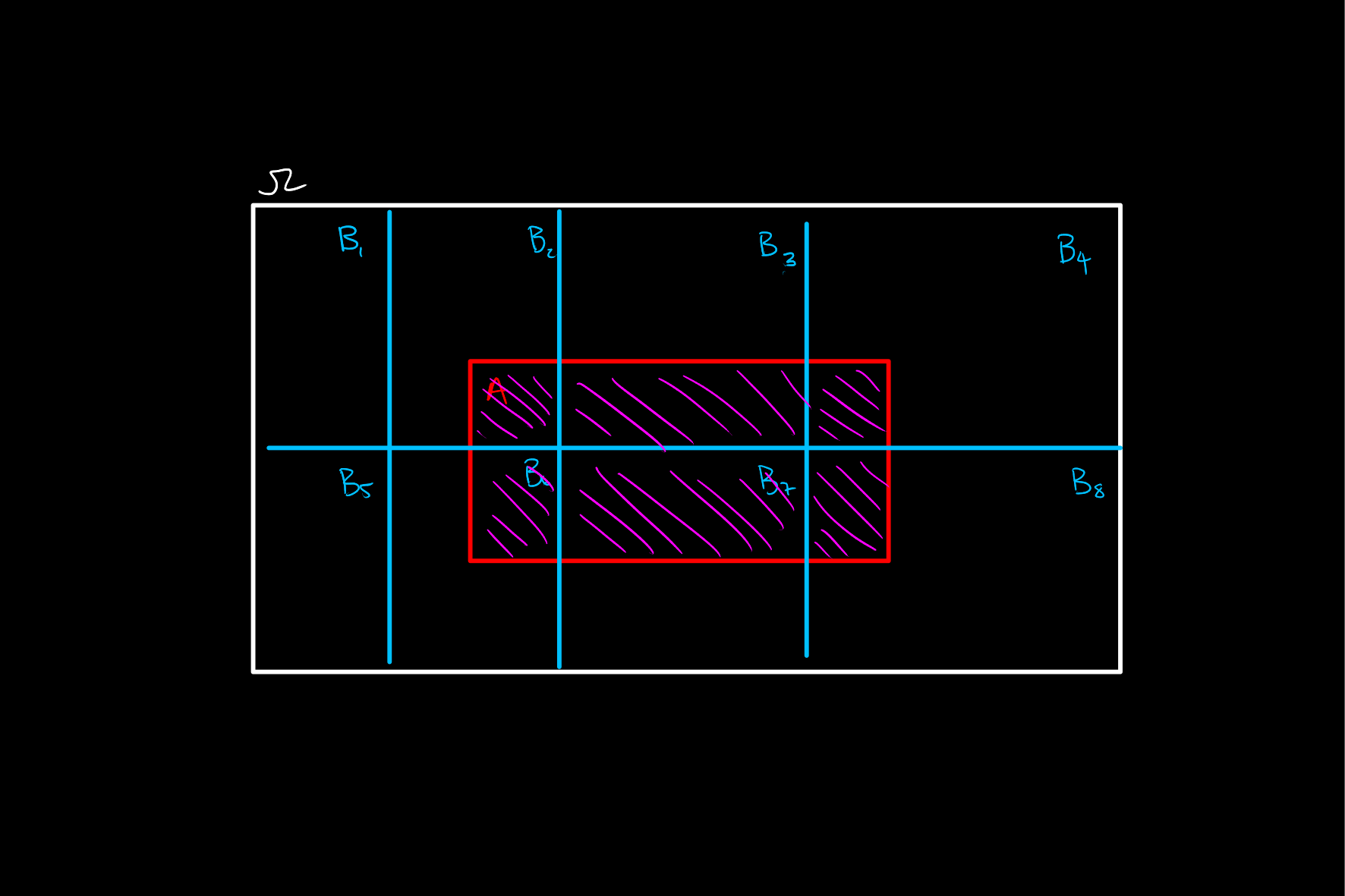Law of Total Probability
Theorem
Given a set of events
This can be intuitively thought of as the partition of the whole space yielding a partition of

and then the probability of

Proof
The result follows very simply from the ability to split the measure across a disjoint union:
and hence, the result we must prove that
This is because:
where